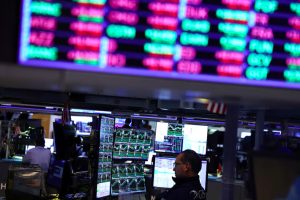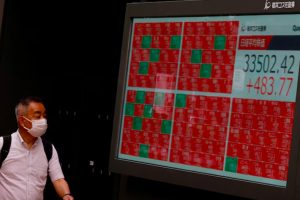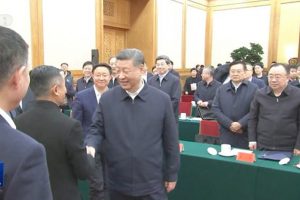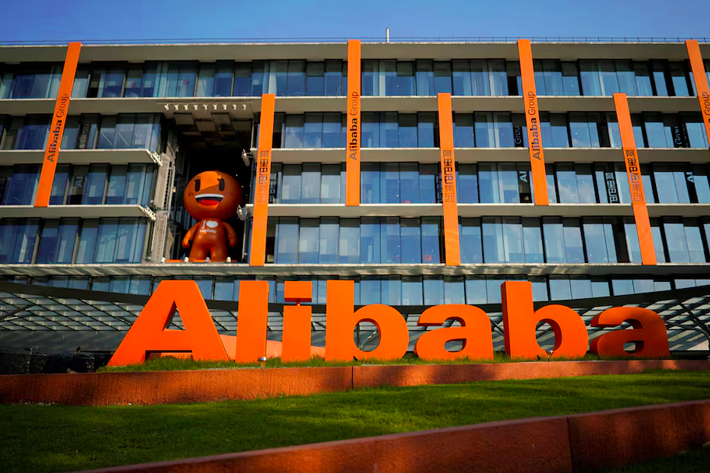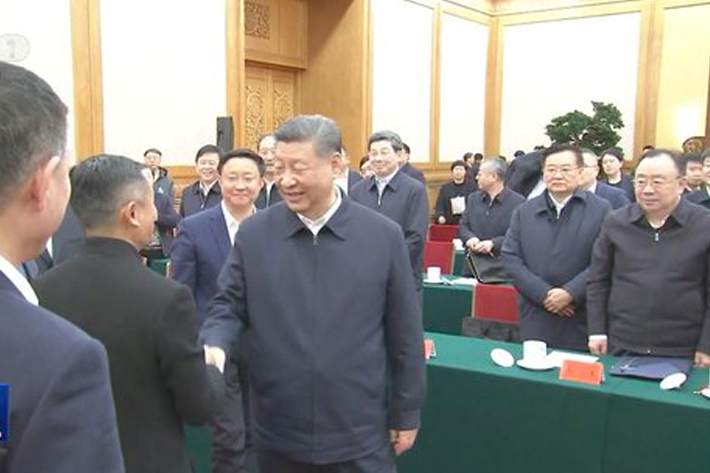Asian stocks took a pummelling on Friday over worries about the US economy, with Japan’s Nikkei leading the hasty retreat with its second-biggest points drop in history.
Shares across the region saw their worst day in over two years after weaker-than-expected US factory data sparked fears of a worsening economic outlook.
And that sense of panic was mostly felt in Japan where the benchmark Nikkei 225 saw its grimmest day in more than four years as a stronger yen piled the pressure on its exporters.
The benchmark Nikkei 225 index closed down 5.81% on Friday, or 2,216.63 points, at 35,909.70 – the largest fall in percentage terms since March 2020 at the start of the pandemic. The broader Topix index lost 6.14%, or 166.09 points, to 2,537.60.
Also on AF: ‘Dire Risks’ of Nvidia AI Dominance Sparks US Probe Call
All three major Wall Street indices finished decisively lower overnight as weak manufacturing data led to worries about a US recession, with the tech-rich Nasdaq index falling the most at 2.3%.
And the yen continued to strengthen following the Bank of Japan’s rate hike decision earlier this week, adding more stress to investor sentiment.
Among major shares, Tokyo Electron lost 11.98% and SoftBank Group was down 8.03%, while Toyota ended 4.22% lower.
China stocks fell too, tracking the weakness in global markets, while the Middle East conflict and China’s fragile recovery also dented sentiment.
A measure of US manufacturing activity dropped to an eight-month low in July amid a slump in new orders, data showed, sparking broad risk-off moves across markets, even after signals from the Federal Reserve earlier this week that a rate cut could come as soon as September.
Investors were also concerned about China’s economic woes. Data earlier this week showed that manufacturing activity shrank sharply. China also reported weaker-than-expected second-quarter economic growth earlier this month.
US Non-Farm Payrolls
China’s blue-chip CSI300 index was down 1.02% with, earlier in the session, its financial sector sub-index lower by 0.7%, the consumer staples sector up 0.21%, the real estate index down 0.11% and the healthcare sub-index up 1.6%.
The Shanghai Composite Index slipped 0.92%, or 27.05 points, to 2,905.34, while the Shenzhen Composite Index on China’s second exchange fell 1.27%, or 20.39 points, to 1,581.80.
Chinese H-shares listed in Hong Kong – stocks belonging to companies from the Chinese mainland – fell 1.92% to 5,969.42, while the Hang Seng Index was down 2.08%, or 359.45 points, at 16,945.51.
Elsewhere across the region, in earlier trade, Sydney was off more than 2% while Seoul and Taipei shed more than 3%, with losses also in Mumbai, Wellington, Manila, Singapore and Jakarta.
MSCI’s broadest index of Asia-Pacific shares outside Japan slumped 2.54% and was headed for its worst day since June 2022.
The dour mood in Asia looked set to continue into Europe, as Eurostoxx 50 futures fell 0.8%. FTSE futures were little changed, while US stock futures extended their declines. Nasdaq futures tumbled 1.35% and S&P 500 futures fell 0.76%.
Focus will next turn to the closely watched non-farm payrolls report later on Friday for further clues on the health of the US labour market and the broader economy, likely to guide investor expectations of the pace and scale of Fed cuts expected later this year.
Yen Edges Higher
Futures point to a roughly 29% chance of a 50-basis-point cut from the Fed in September.
In currencies, the yen edged higher to 149.18 per dollar, hovering near an over four-month high. It was eyeing a 3% rise for the week, with gains in the Japanese currency further exacerbated by safety flows on Friday.
Also reflecting investor worries about a US economic slowdown, the 10-year Treasury yield fell to a six-month low of 3.9440% in early Asia trade as investors poured into the safe-haven bonds.
The two-year yield, which typically reflects near-term rate expectations, slumped to its lowest since May 2023 of 4.1090%, and was last at 4.1409%.
In commodities, oil prices edged higher though were set for a fourth weekly decline as signs of disappointing global fuel demand growth outweighed fears of supply disruptions in the key Middle East production region.
Brent was last up 0.6% to $79.99 a barrel, while US crude rose 0.63% to $76.79 per barrel.
Key figures
Tokyo – Nikkei 225 < DOWN 5.81% at 35,909.70 (close)
Hong Kong – Hang Seng Index < DOWN 2.08% at 16,945.51 (close)
Shanghai – Composite < DOWN 0.92% at 2,905.34 (close)
London – FTSE 100 < DOWN 0.30% at 8,258.43 (0933 BST)
New York – Dow < DOWN 1.21% at 40,347.97 (Thursday close)
- Reuters with additional editing by Sean O’Meara
Read more:
China Faces Low Growth Without Greater Stimulus, Analysts Say
Hedge Funds Boost Japan Allocations, China Stocks at 5-Year Low
Foreign Investment in ASEAN Tops China For First Time in Decade
Nikkei Slumps as Yen Surges, Hang Seng Dips on Factories Blow





